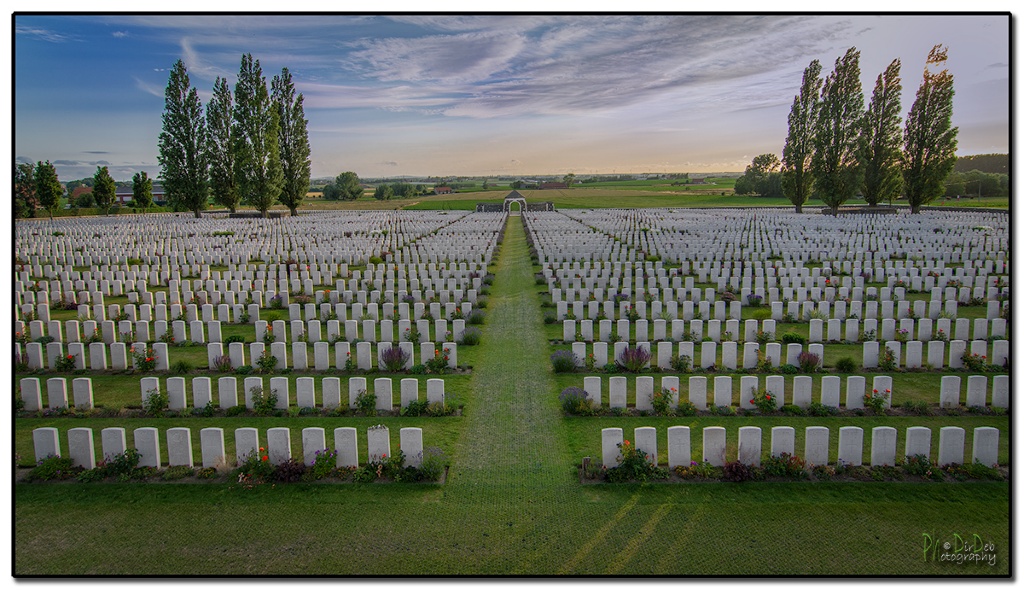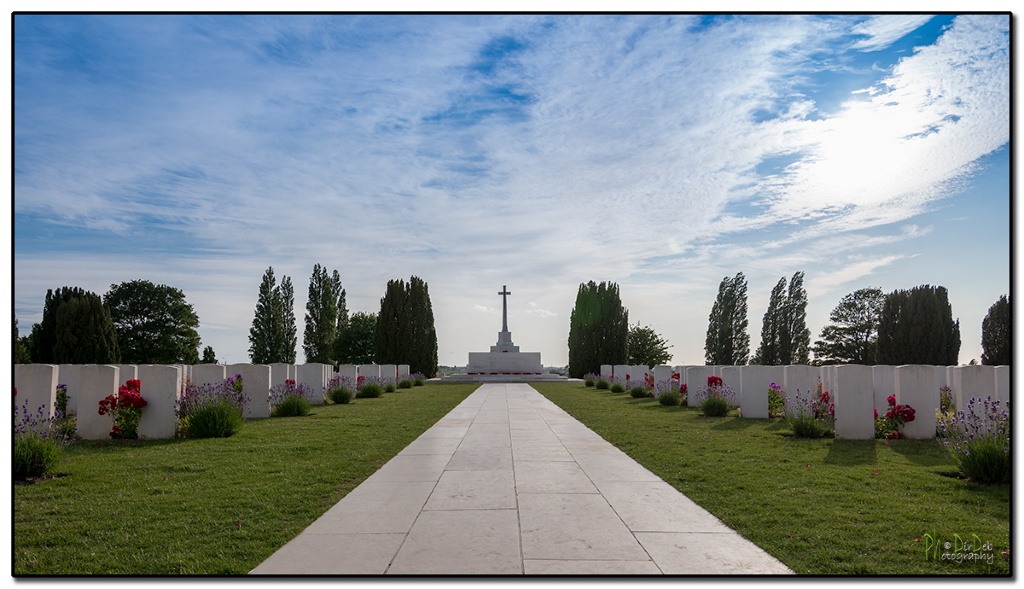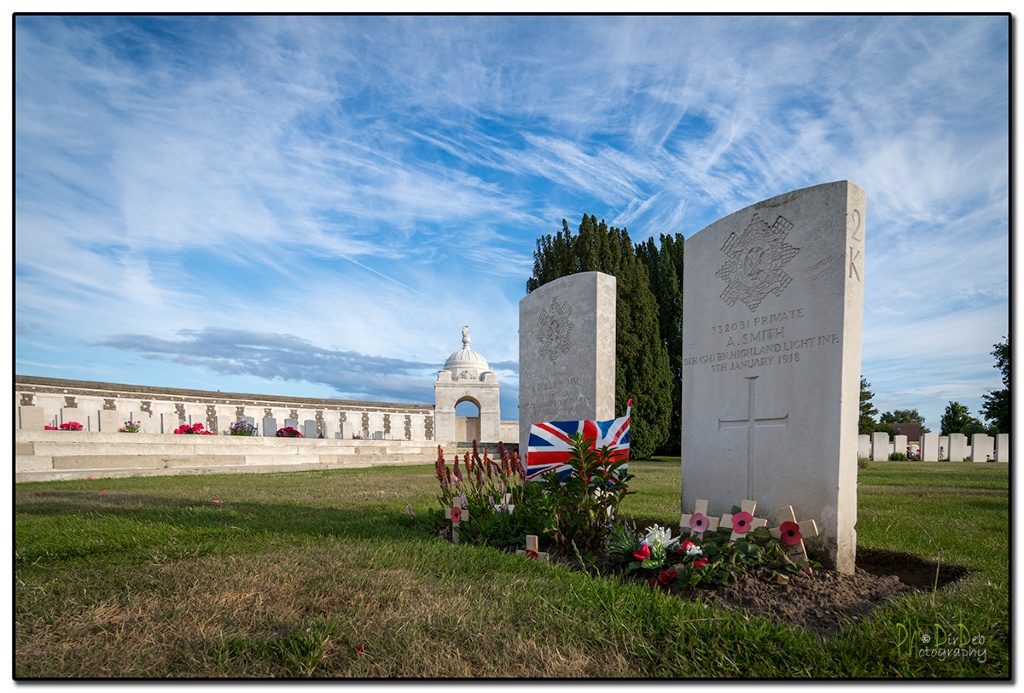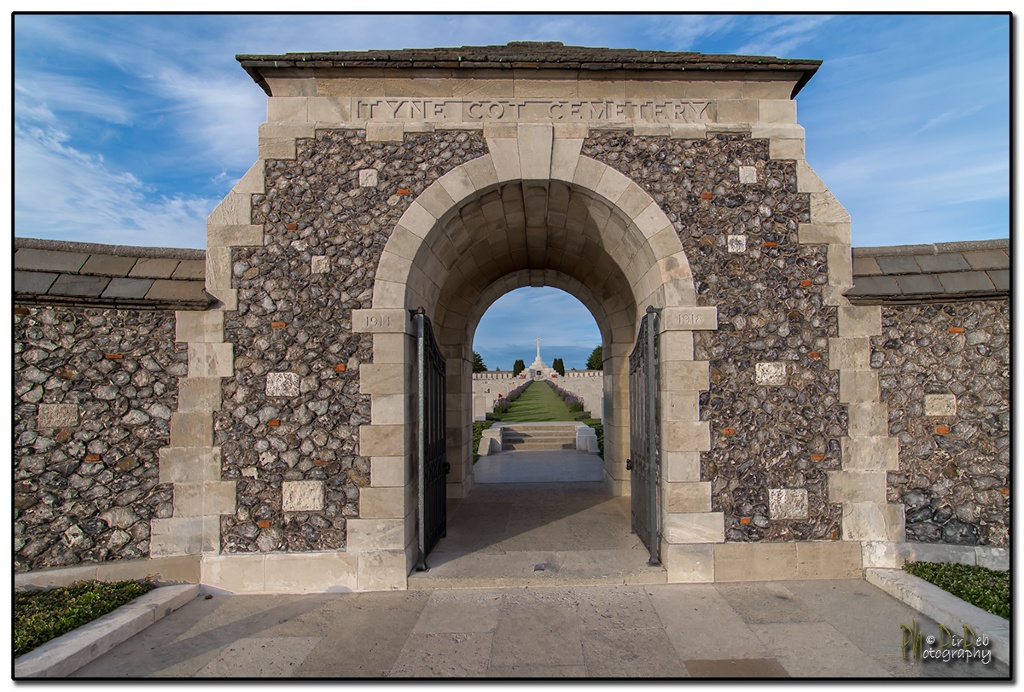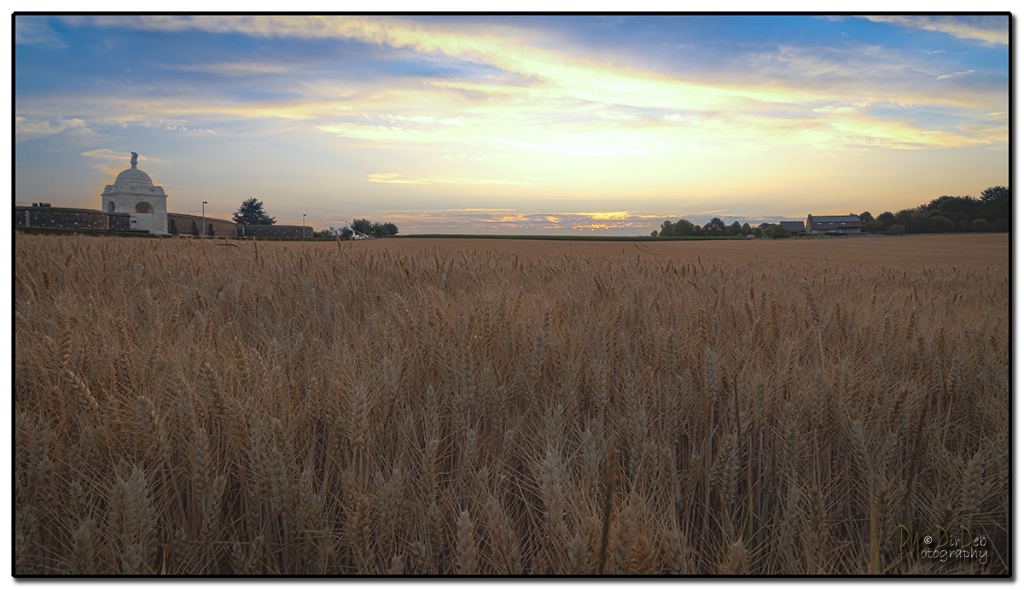Tyne Cot Cemetery
- Country Belgium
- Total identified casualties 3614 Find these casualties
- Region West-Vlaanderen
- Identified casualties from First World War
- GPS Coordinates Latitude: 50.88699, Longitude: 2.99771
Please note
Please be aware that there are a number of slip, trip and fall hazards. Small children should be supervised at all times, especially if climbing on the memorial.
Location information
Tyne Cot Cemetery is located 9 Kms north-east of Ieper town centre, on the Tynecotstraat, a road leading from the Zonnebeekseweg (N332).
Visiting information
There are two separate registers for this site - one for the cemetery and one for the memorial. The cemetery register will be found in the gatehouse as you enter the cemetery, and the memorial register will be found in the left hand rotunda of the memorial as you face the memorial.
SCHOOL GROUPS: TEACHERS - PLEASE CLOSELY SUPERVISE YOUR STUDENTS, PARTICULARLY AT THE TYNE COT CEMETERY CROSS OF SACRIFICE
Wheelchair access to this cemetery is possible via an entrance at the rear and is signposted from the car park.
For further information regarding wheelchair access, please contact our Enquiries Section on 01628 507200.
History information
Tyne Cot Cemetery is located in an area which was known as the Ypres Salient where Commonwealth, French, Belgian and German forces fought almost continuously throughout the First World War.
In 1917, British forces launched the Third Battle of Ypres, which raged from July to November. Forces from the UK, Australia, Canada, New Zealand and South Africa fought to push the Germans off the low ridges that dominate the area. On 4 October 1917, during the phase known as the Battle of Passchendaele, the 3rd Australian Division captured a group of German Bunkers on the ridge below the village of Passchendaele.
One of these bunkers was unusually large and was used as an advanced dressing station after its capture. From 6 October 1917 to the end of March 1918, 343 graves were made, on two sides of it, by the 50th (Northumbrian) and 33rd Divisions, and by two Canadian units. The cemetery was in German hands again from 13 April to 28 September, when it was finally recaptured, with Passchendaele, by the Belgian Army.
TYNE COT CEMETERY was greatly enlarged after the Armistice when remains were brought in from the battlefields of Passchendaele and Langemarck, and from a few small burial grounds, including the following:
IBERIAN SOUTH CEMETERY and IBERIAN TRENCH CEMETERY, LANGEMARCK, 1,200 metres North of Frezenberg, close to a farm called by the Army "Iberian". These contained the graves of 30 soldiers from the United Kingdom who fell in August-September 1917, and March 1918.
KINK CORNER CEMETERY, ZONNEBEKE, on the road to Frezenberg, containing the graves of 14 soldiers from the United Kingdom, nine from Canada and nine from Australia, who fell in September-November 1917.
LEVI COTTAGE CEMETERY, ZONNEBEKE, near the road to Langemarck, containing the graves of ten soldiers from the United Kingdom, eight from Canada and three from Australia, who fell in September-November 1917.
OOSTNIEUWKERKE GERMAN CEMETERY, in the village of Oostnieuwkerke, containing the graves of 20 soldiers and 2 airmen from the United Kingdom and two soldiers from Canada who fell in 1915-1917.
PRAET-BOSCH GERMAN CEMETERY, VLADSLOO, in the forest on the road from Kortewilde to Leke. Here were buried six officers of the R.F.C. and R.A.F. who fell in 1917-18.
STADEN GERMAN CEMETERY, on the South-East side of the road to Stadenberg, containing the graves of 14 soldiers from the United Kingdom and ten from Canada who fell in 1915-1917.
WATERLOO FARM CEMETERY, PASSCHENDAELE, 650 metres North-East of 's Gravenstafel, containing the graves of ten soldiers from Canada, seven from the United Kingdom and two from New Zealand, who fell in 1917-18.
ZONNEBEKE BRITISH CEMETERY No.2, on the road between Zonnebeke and Broodseinde, in which the Germans buried 18 men of the 2nd Buffs and 20 of the 3rd Royal Fusiliers who fell in April 1915.
It is now the largest Commonwealth war cemetery in the world in terms of burials. At the suggestion of King George V, who visited the cemetery in 1922, the Cross of Sacrifice was placed on the original large pill-box. There are three other pill-boxes in the cemetery.
There are now 11,961 Commonwealth servicemen of the First World War buried or commemorated in Tyne Cot Cemetery. 8,373 of the burials are unidentified but there are special memorials to more than 80 casualties known or believed to be buried among them. Other special memorials commemorate 20 casualties whose graves were destroyed by shell fire. There are also 4 German burials, 3 being unidentified.
The cemetery was designed by Sir Herbert Baker.
The TYNE COT MEMORIAL forms the north-eastern boundary of Tyne Cot Cemetery and commemorates nearly 35,000 servicemen from the United Kingdom and New Zealand who died in the Ypres Salient after 16 August 1917 and whose graves are not known. The memorial stands close to the farthest point in Belgium reached by Commonwealth forces in the First World War until the final advance to victory.
The memorial was designed by Sir Herbert Baker with sculpture by F V Blundstone.


